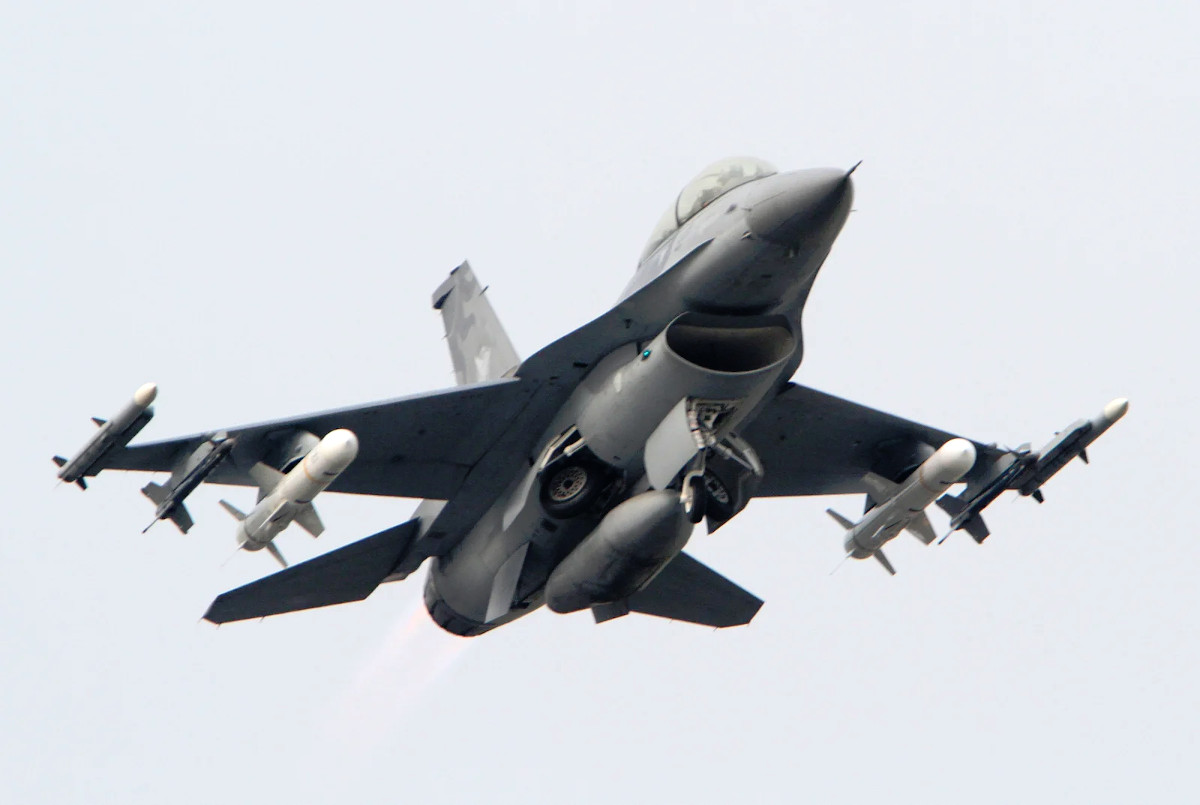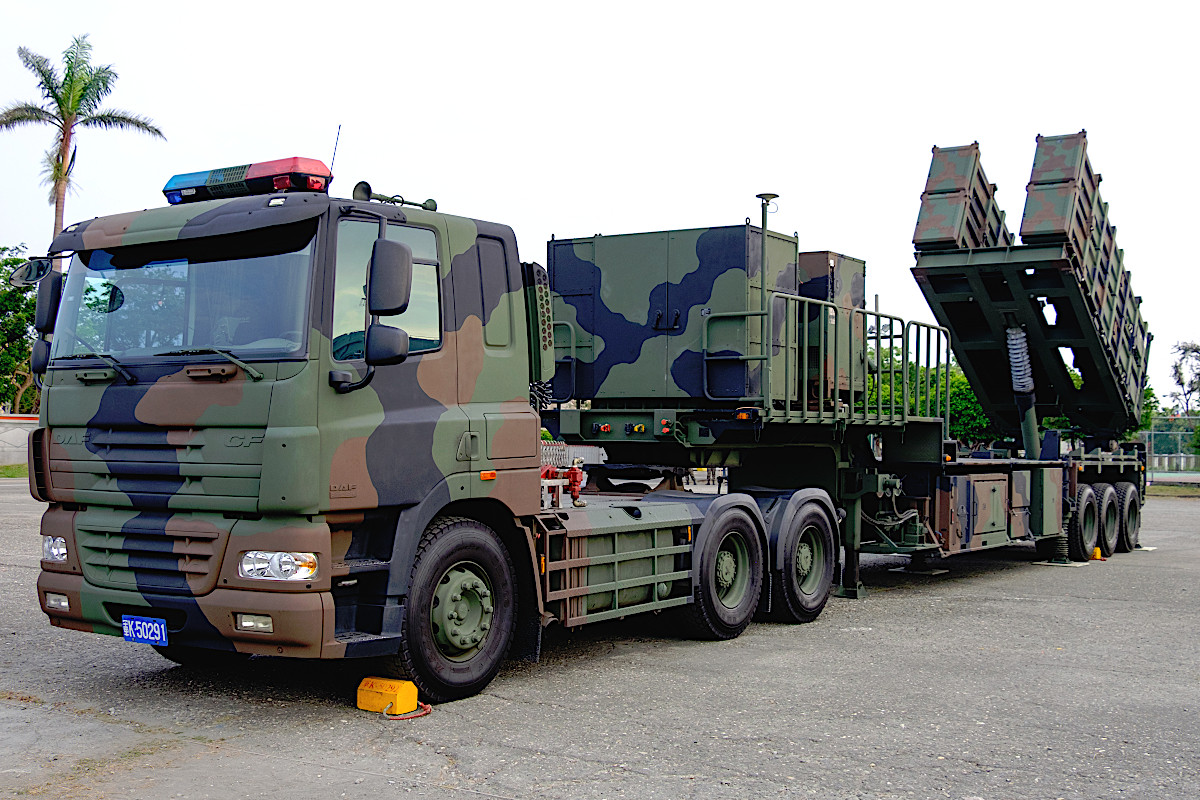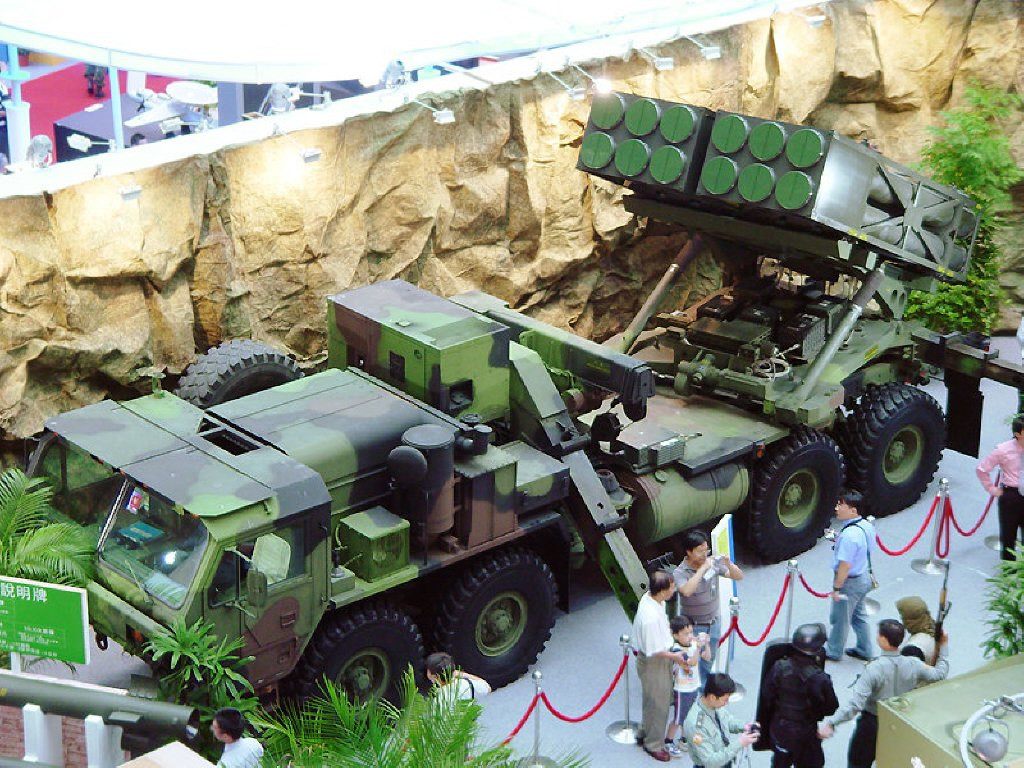Taiwanese authorities say that they are looking to buy ground-launched Harpoon anti-ship missiles and mobile launchers to augment the island’s coastal defenses. This announcement follows reports that China’s People’s Liberation Army Navy might be gearing up for a first-ever naval exercise featuring both of its aircraft carriers. Chinese naval forces have been steadily and significantly growing in recent years, in general, which has already prompted the Taiwanese military to seek a variety of new and improved anti-ship capabilities.
Taiwanese Deputy Defense Minister Chang Che Ping informed lawmakers on the island about the plans to acquire the land-based Harpoons during a committee meeting on May 28, 2020. Reports had first begun to emerge earlier this month that the Taiwanese military could be looking to buy these missiles.
Chang did not say what type of Harpoons the Taiwanese military was looking to buy for the coastal defense role. Previous reports had indicated that the missiles would likely be Block II variants. Taiwan’s Air Force already has air-launched Block II AGM-84L Harpoons, while its Navy has submarine-launched UGM-84Ls. The Air Force also has older air-launched AGM-84 variants, while the Navy’s Kee Lung class destroyers and Chi Yang class frigates, ex-U.S. Navy Kidd and Knox class ships, respectively, both have the ability to fire older surface-launched RGM-84 variants.

It’s not clear what vehicle the Taiwanese military expects to use as the mobile launch platform, either. Chang did say that part of the reason there is a desire to acquire the ground-launched Harpoons, despite having land-based versions of the indigenously developed Hsiung Feng II and III anti-ship missiles, was that the American weapons would offer greater mobility.
The coastal defense versions of the Hsiung Feng II and III employ a tractor-trailer-mounted launcher. The tractor is derived from a commercial truck design and the entire system would certainly have quite limited off-road mobility.

It’s worth noting that the Danish military, the only one to date to field a coastal defense version of the Harpoon, seen in the video below, also used a commercial derivative truck design as the launch platform. The Danes retired those systems in 2003.

However, a land-based Harpoon launcher mounted on a vehicle such as an Oshkosh Heavy Expanded Mobility Tactical Truck (HEMTT), a U.S.-made heavy tactical truck that the Taiwanese Army already operates and has employed as the base for a rocket artillery system in the past, would give the weapons added flexibility. This would be especially valuable in the event that established road networks become unavailable during a major attack from the mainland.
Being able to rapidly relocate the launchers, even to more austere areas, would also make it easier to reposition them in response to new developments, something that could easily happen given China’s ability to attack the island from all directions, as well as help shield them from counterattacks.

Still, it’s not entirely clear why Taiwan would not just pursue an improved launch vehicle for its Hsiung Feng IIs and IIIs, especially given the fact that the latter of these weapons is supersonic. The Harpoon, even in its most advanced variations, is a subsonic missile.
Still, as noted, Harpoon is already in Taiwanese service. It is also a combat-proven weapon that the manufacturer, Boeing, still actively supports and is in use with dozens of other operators around the world, including the United States.
Boeing also continues to develop upgraded versions with additional capabilities, such as the newer Block II+ variants. These feature an improved GPS receiver and flight control system that allows for more precise navigation to the general target area, after which the missile’s active radar seeker takes over. That seeker means it can find its target even in poor weather and at night, too. These updated weapons have a two-way data-link that allows it to be retargeted while in flight, as well. You can read more about the Block II+ and other Harpoon developments in this past War Zone piece.
Acquiring additional land-based coastal defenses would certainly be in line with other anti-ship efforts it is pursuing already. Last year, authorities on the island announced that the next batch of Min Chiang class stealthy catamaran corvettes for the Taiwanese Navy would have configured with a heavy emphasis on naval mine-laying. That service is also set to receive a new class of dedicated high-speed minelayers.
The Taiwanese military certainly has a general need for anti-ship capabilities, given the expanding size and strength of the Chinese Navy. Deputy Defense Minister Chang’s confirmation of the Harpoon plans notably comes as China’s two aircraft carriers, the Liaoning and the Shandong, are reportedly training with other ships and aircraft in the Yellow Sea ahead of their next deployments. Satellite imagery has confirmed that Shandong is indeed in the Yellow Sea.
There are also reports that Shandong will head to the South China Sea for exercises after these preparations. There is a possibility that Liaoning could follow. Both ships could pass through the Taiwan Strait on their way south, which would certainly be a signal to the government on Taiwan. A dual-carrier drill, something that requires a significant amount of resources to conduct and that China has never done before, would send its own clear message about the People’s Liberation Army Navy’s capabilities to potential adversaries, including the United States, far and wide.
All of this also comes as friction between authorities in Beijing and those in Tapei has spiked following the inauguration of Taiwanese President Tsai Ing Wen last week. Tsai won her second term earlier this year and has announced plans to further distance the island from Beijing. The People’s Republic of China sees Taiwan as integral to its national territory and threatens regularly to use military force to prevent it from declaring full independence.
The United States, Taiwan’s principal ally, does not officially recognize the government in Taipei, but has pledged to continue to work with it and help provide for its defense, including through arms sales, until there is a formal final agreement between it and Beijing over the island’s status. Tsai, who first took office shortly before U.S. President Donald Trump, has cultivated a close relationship with the current American Administration and has already secured unprecedented arms deals, including the purchase of new Block 70 F-16C/D Viper fighter jets.
Deputy Defense Minister Chang told Taiwanese legislators that, if the U.S. approves the sale and does so quickly, the country could start receiving new land-based Harpoons in 2023. Given Tsai’s ties with the Trump Administration, combined with support from pro-Taiwan members of Congress, all of who could be motivated by the current state of affairs between Beijing and Taipei, it’s possible that the process could get expedited.
Contact the author: joe@thedrive.com
